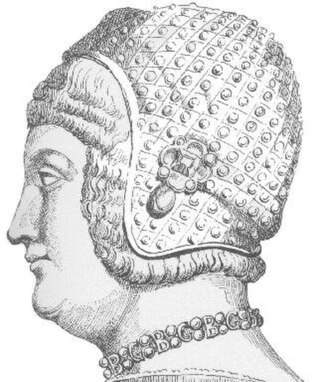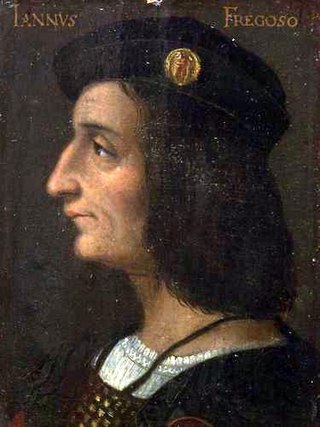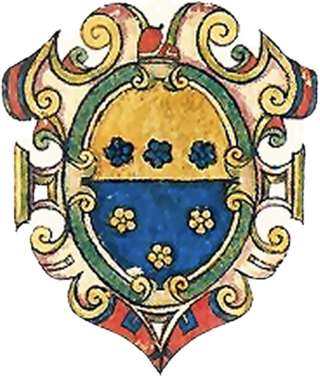See also
| International | |
|---|---|
| National | |
| People | |
| Other | |
Johannes Crastonis (Crastonus; Crastone) was an Italian renaissance humanist and scholar. Crastonus was probably born in Castel San Giovanni close to Piacenza. [1] He was a member of the Carmelites. [2] He studied in Constantinople but migrated to Modena (near Ferrara) in Italy. There he published a Greek-Latin dictionary about 1480. [3]
In Milan, together with Bonus Accursius, he edited various works to facilitate the learning of Greek. His collaboration with Bonus Accursius started no later than 1478. [4] Among these works were a bi-lingual Greek and Latin edition of the Psalms, dedicated to Ludovico Donà, published on 21 September 1481. This was the first printed version of the Greek Psalms. [5] While at Milan, he was friends with Ermolao Barbaro, Francesco Filelfo, Giorgio Merula and Iacopo Antiquari. [6] His Vocabulista, a Greek-Latin dictionary, was first printed probably in Milan and then re-printed twice before 1500 by Dionysius Bertochus. [7] A translation of Constantine Lascaris's Erotemata was published on 29 September 1480, which was reprinted in 1489. [8] Crastonus died after 1497, as is clear from a reference made to him in that year. [9]

The Pazzi conspiracy was a failed plot by members of the Pazzi family and others to displace the Medici family as rulers of Renaissance Florence.

Accursius was an Italian jurist. He is notable for his organization of the glosses, the medieval comments on Justinian's codification of Roman law, the Corpus Juris Civilis. He was not proficient in the classics, but he was called "the Idol of the Jurisconsults".

Azo of Bologna or Azzo or Azolenus was an influential Italian jurist and a member of the school of the so-called glossators. Born circa 1150 in Bologna, Azo studied under Joannes Bassianus and became professor of civil law at Bologna. He was a teacher of Franciscus Accursius. He is sometimes known as Azo Soldanus, from his father's surname, and also Azzo Porcius, to distinguish him from later famous Italians named Azzo. He died circa 1230.
Bonino Mombrizio (Mombritius) (1424 - between 1482 and 1502, perhaps 1500) was an Italian philologist, humanist, and editor of ancient writings. He was also a lawyer and a bureaucrat and the father of four daughters.
In textual and classical scholarship, the editio princeps of a work is the first printed edition of the work, that previously had existed only in manuscripts. These had to be copied by hand in order to circulate.

Bona of Savoy, Duchess of Milan was Duchess of Milan as the second spouse of Galeazzo Maria Sforza, Duke of Milan. She served as regent of Milan during the minority of her son 1476–1481.
Lucrezia Landriani was the mistress of Galeazzo Maria Sforza, Duke of Milan, and the mother of his renowned illegitimate daughter, Caterina Sforza, Lady of Imola, Countess of Forlì. Lucrezia had three other children by the Duke, and two by her husband.

Guido de Monte Rochen or Guy de Montrocher was a French priest and jurist who was active around 1331. He is best known as the author of Manipulus curatorum, a handbook for parish priests, that was often copied, with some 180 complete or partial manuscripts surviving, and later reprinted throughout Europe in the next 200 years, with at least 119 printings, and sales which have been estimated to be three times those of Thomas Aquinas' Summa Theologica. It became obsolete only when the Council of Trent created the Roman Catechism in 1566.

Barbara of Brandenburg was a Marchioness consort of Mantua, married in 1433 to Ludovico III Gonzaga, Marquis of Mantua. She was referred to as a virago because of her strong character and forceful nature, and served as Regent of Mantua several times during the absence of Ludivico III between 1445 and 1455. She is regarded as an important figure in the Italian Renaissance and was a student of Vittorino da Feltre.

Francesco Gonzaga was an Italian bishop and a Cardinal of the Roman Catholic Church during the reigns of Popes Pius II, Paul II and Sixtus IV.

Bernardino Corio was an Italian humanist and historian of the Renaissance. His Patria historia (1503), which traces the history of Milan from its remote origins to 1499, is the earliest scholarly study of Italian history to be written in Italian vernacular rather than Latin.
Andrea Cappello was a Venetian nobleman, merchant, banker, and politician.

Girolamo Donato, also spelled Donati, Donado or Donà, was a Venetian diplomat and humanist. He made important translations of ancient Greek philosophy and the Greek Fathers into Latin. He served the Republic of Venice on embassies abroad on twelve separate occasions, most importantly at Rome four times, and also served as a governor of Ravenna (1492), Brescia (1495–97), Cremona (1503–04) and Crete (1506–08).

Battista Fregoso was the 40th Doge of the Republic of Genoa.
Pietro Marso, in Latin Petrus Marsus, was an Italian priest and humanist. Learned in Greek and a teacher of rhetoric, he mainly wrote commentaries on the classics.

The House of Loredan-Santa Maria is a cadet branch of the noble House of Loredan which has produced many politicians, diplomats, military generals, naval captains, church dignitaries, writers and lawyers, and has played a significant role in the creation of modern opera with the Accademia degli Incogniti, also called the Loredanian Academy. The branch draws its name from the parishes of Santa Maria Formosa and Santa Maria dei Miracoli in Venice, around which it was historically settled. The progenitor of the branch is considered to be the famous admiral and procurator Pietro Loredan (1372-1438) by his sons Giacomo and Polo.
Sebastiano Badoer was a Venetian patrician, diplomat and humanist. He served as ambassador four times to the Holy See, thrice to Milan and once each to Naples, Hungary, France and the Empire. He left behind few writings but ample testimonies of his learning.
Bergonzio Botta was a Milanese functionary. He served as the master of ceremonies of Ludovico Sforza from at least 1489 and, after Ludovico became Duke of Milan, as his treasurer from 1494 to 1499. During the Italian Wars after 1499, he was aligned with the French. He is most famous today for one his earliest recorded public acts. In 1489, he organized what is regarded as one of the earliest ballet performances.
Zaccaria Barbaro was a Venetian statesman and diplomat.